
If you intend for your new airline to carry passengers, you have a good deal of planning yet to do. From the classes of travel you will offer onboard to the types of wine you will provide with meal services (if you even offer such ‘frills’ at all), now is the time to consider your passengers’ experience, both on the ground and in the air.
A brief history of passenger experience
The airline passenger experience has come a long way in the last seventy years. From the long-haul piston-liners gracing the skies and plying the trans-oceanic trunk routes in the 50s, through the introduction of the jet age, right up to the present day, passenger service and experience have constantly evolved, shifting direction repeatedly as passenger expectations and requirements change.
Had you told an airline traveler in the 1960s that within 50 years, they might be flying on a double-decked aircraft holding over 500 people, your comments might have raised an eyebrow. They might have smirked had you added that this aircraft would also have a bar and shower onboard.
Had you told them that every passenger would be able to access over 5000 channels of inflight entertainment on demand, be able to communicate with others on the same flight or even on the ground without leaving their seat, and be able to the exterior of the aircraft in which they are flying from various angles, scoffs of disbelief would likely to have been heard.
Passenger experience, after safety, is probably the essential aspect for your airline to get right. Because without a decent service offering, you won’t have any passengers, and without any passengers, you will quickly have no airline.

Classes of travel
The type of airline you are proposing to operate will to an extent, dictate what classes of travel you might offer. See How To Start An Airline: Part 2 – Developing A Business Plan for more on this subject.
The range of travel classes you can offer will, in part, be dictated by the aircraft type or types you intend to operate. If you are a short-haul airline with the Q400 being your largest aircraft type, you might decide that offering a three-class product on such an aircraft is unlikely to work for your airline.
Similarly, suppose you are a larger operator with some ATR42s feeding the long-haul operations at your hub airport. You might wish to consider how you will cater to your premium passengers connecting from an ATR feeder route onto your long-haul first class product offering.
If you follow the low-cost or ultra-low-cost model, your offering might be simplified compared to other models. However, this does not make achieving high levels of passenger satisfaction any less critical.
Conversely, suppose you intend your airline to be a multi-class long-haul carrier. In that case, your planning is likely to be far more complex, possibly involving numerous suppliers, different aspects of crew training, different onboard equipment, and additional marketing and pricing strategies.

Hybrid class structures
What used to be the traditional model of offering first, business, and economy classes on long-haul aircraft has long since been disposed of. And as airlines used to be carbon copies of each other essentially, differentiation is now the key.
The diversity of service offerings in a far more segmented marketplace translates into various types of airlines nowadays, many of which cross the boundaries between traditionally more segmented travel markets.
Additionally, a more hybrid class system has also developed, blurring the lines even further between the traditional three-tier model. One of the first to stray from the conventional long-haul, three-class model of the 1970s and 1980s was Virgin Atlantic Airways.
Having shunned the trend to offer the standard three classes across the Atlantic when it launched in 1984, the airline offered just two – economy class and Upper Class – the latter effectively a hybrid premium class offering branded by the airline as ‘first class product at a business class fare.’
It wasn’t until the early 90s that the same airline then pioneered another new class of travel that was effectively an upgraded economy class. Branded initially as ‘Mid Class’ when first launched, its premium economy service has become almost an industry standard for long-haul airlines. Dubai-based Emirates has only recently joined the premium economy fray.

Choose your model and stick to it
From ultra-low-cost all economy to the likes of Qatar Airways with its Q Suites and JetBlue with its high premium capacity ‘Mint’ transcontinental USA services, there seems to be no fixed model that you are compelled to stick with when launching your airline these days.
It is up to you how you wish your airline to appeal to your potential consumers and where you wish to position yourself in whichever market is your target.
It is imperative that you decide on what sort of airline you wish to be and what level of passenger experience you are offering well in advance of beginning operations. You want your brand to be associated with a passenger experience that the traveling public will be attracted to, will pay good money to use, and return to many times over.
For every passenger whose loyalty you can earn, more money is in the marketing budget to attract new passengers. Ultimately, and in the simplest of terms, you aim to fill your flights with passengers paying decent fares from which you can earn revenue.
However, in some instances, you may even be forced to ‘dump’ seating inventory by selling at a lower fare than your operating costs for that seat. This is a model often used by low-cost airlines, which rely on upselling everything they can to make up the revenue earned per flight.
The upselling trend is becoming increasingly common in other market segments, from additional baggage, seat reservations, extra leg-room, and many other ‘frills’ or extras that were once included as standard. It will be up to you how your airline wishes to position itself and how it chooses to earn incremental revenue over its seat revenue, if at all.

Cabin design and current trends
As with classes of travel, the world of passenger seating design and configuration is constantly moving. Long gone are the days when all passengers faced forwards at all times, and the only reason to leave your seat was to visit the bathroom.
Additionally, some readers may remember when all onboard had to watch the same inflight movie on a drop-down screen at the front of the cabin, and the cabin crew came around with sets of rather unappealing plastic earphones that you could rent to watch it.
Seat and cabin design has evolved massively over the years. From seats that massage you while you lie flat and sleep to those where you can dine with a fellow passenger. Similarly, from charging your electronic devices to ordering in-flight catering without having to press the call bell, innovation is the mainstay of cabin design, and passenger expectations continue to be raised as a consequence.
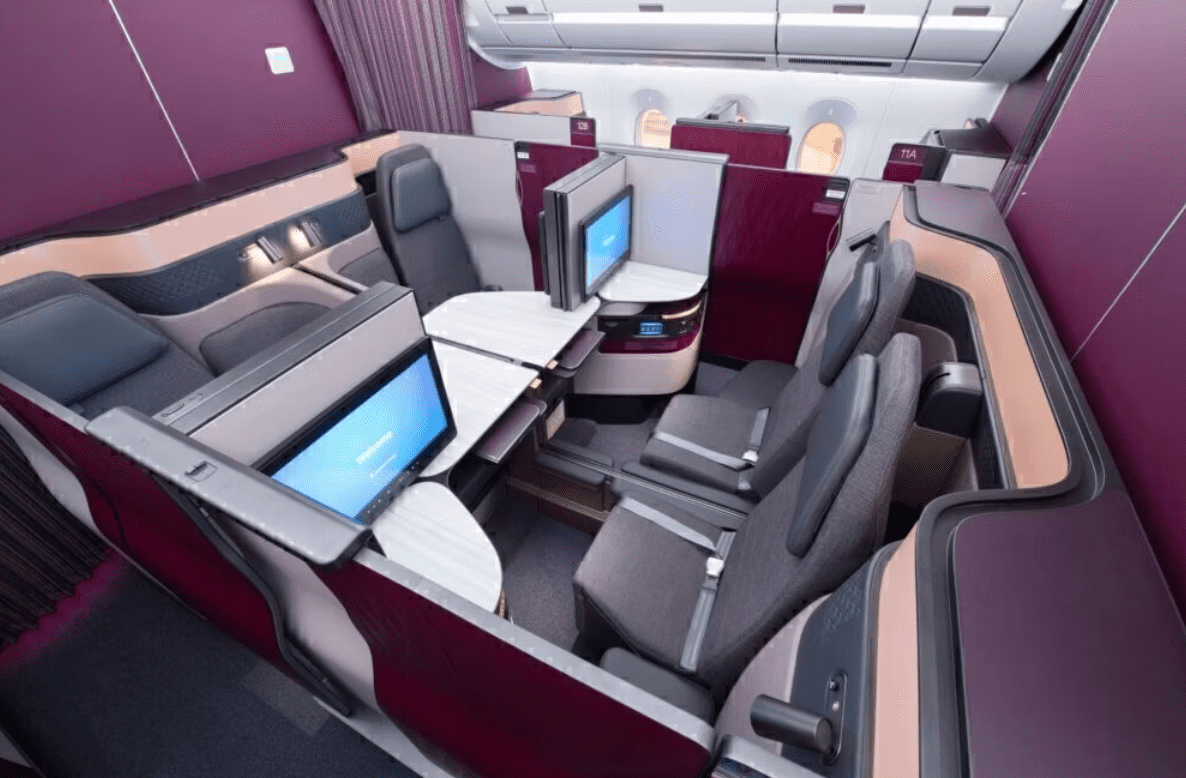
As someone starting their own airline, you must identify the market in which you will operate and closely examine what your competitors are doing in that market. Some market research is vital to experience firsthand what passengers are currently offered by your competition.
Only by getting on your competitor’s flights will you understand what is currently offered to passengers in the market and the minimum level to which your airliner must aspire to coax new and existing passengers in the market to try your airline as opposed to the opposition.
We all know that airlines are offering increasing ways to improve the onboard passenger experience, and with time, the minimum expectations are raised. It will not be long before wireless internet connection becomes free-of-charge and available as standard on almost all aircraft of nearly all airlines, as those who do not currently offer it will fear getting left behind.
Trends in cabin design and passenger amenities are constantly evolving. In recent years, direct aisle access has significantly increased in importance in premium cabins, as have privacy screens. As mentioned above, Emirates was the first airline to put a shower on its aircraft (currently limited to its A380 fleet), and walk-up bars have become increasingly commonplace.
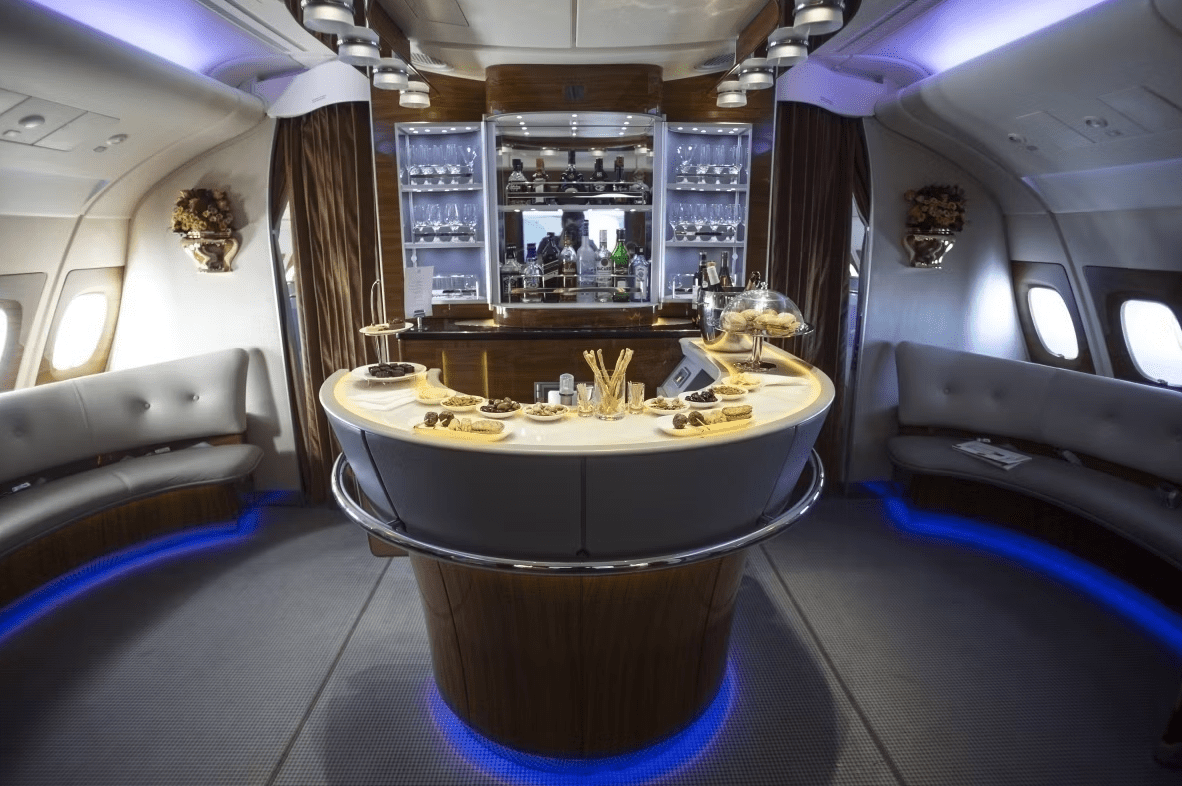
Ultra-long-haul – a whole new challenge
Ultra-long-haul flights will become increasingly common in years to come as aircraft and engine technology advances. We have already seen some of the world’s major airlines offering a range of these ultra-long-haul flights in recent years.
However, the pinnacle of such operations will be the long-awaited arrival of Qantas’ Project Sunrise non-stop operation between Sydney and London due to commence in 2025.
With a planned flight time of around 20 hours, passengers on this service will be the first not only to travel this far non-stip on a regularly scheduled service but also have the ignominious accolade of being the first to sit virtually in the same position for an entire flight of such a length.
Qantas is aware of the physical stresses that doing so might impose on the human body and has researched how it might alleviate some of those stress points. Nonetheless, ultra-long-haul is here to stay and will be a market to watch in the coming years in terms of passenger experience.
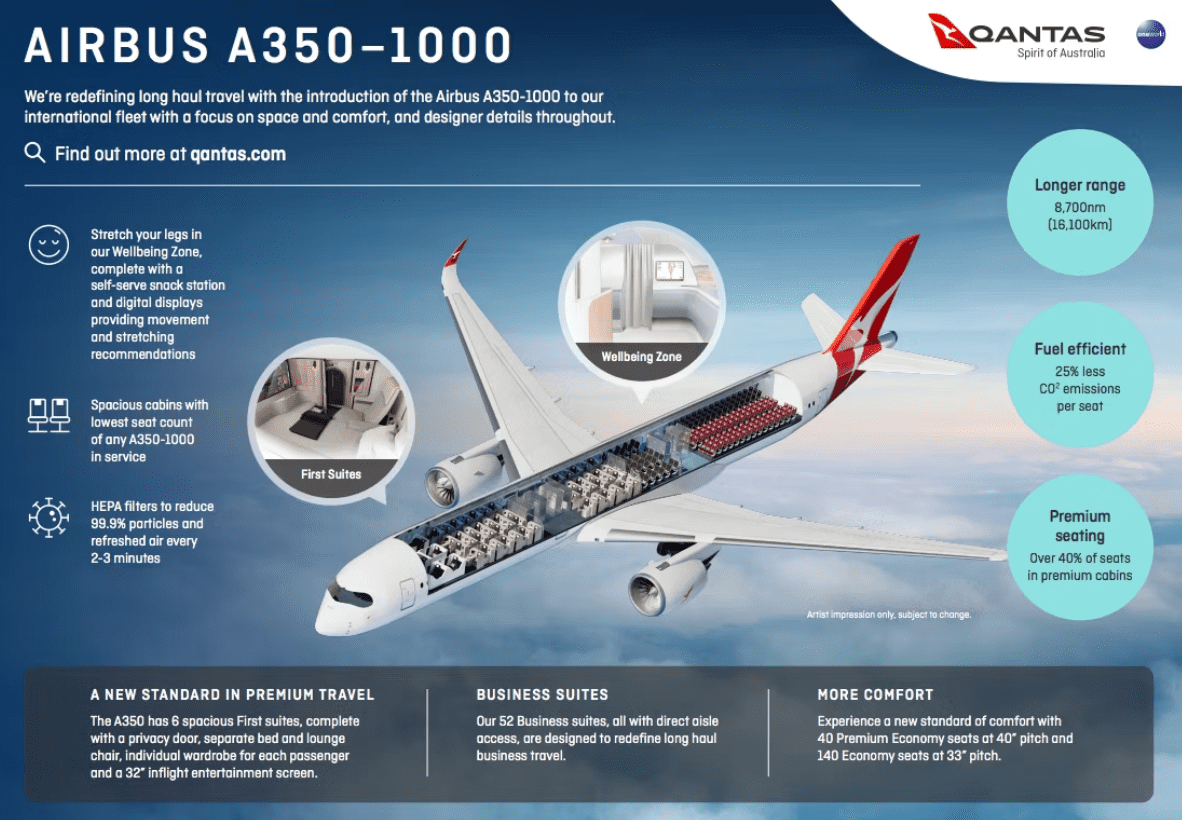
Inflight catering
Offering food and beverages to passengers has always been a staple of the airline passenger experience. Such service keeps your customers fed, watered, and ideally happy. Still, a meal service onboard can also help break up the monotony of long flights and often flagpost particular stages of the passenger’s journey, such as a breakfast service before an early morning arrival.
Onboard catering has evolved over the decades and continues to do so. Depending on the class of travel, passengers are nowadays offered an enormous range of inflight dining options between airlines.
The experience can vary enormously, from the ‘buy-on-board’ model once pioneered by low-cost airlines but now more commonplace throughout various market segments, to the whole fine dining service served on crisp white linen, with bone china crockery and cut glass aplenty.

Even with inflight catering, there is no such thing as standard fare these days. Even how airline passengers order and receive their dining experience has evolved beyond recognition in just a few years. Innovations such as on-demand dining, in-seat ordering, and pre-ordering inflight meals have become industry norms. Customers have become increasingly open to these new methods of receiving onboard food and beverage service.
You will need to understand your passengers and their needs when using your airline’s services before you make any decisions regarding onboard catering. Offering nothing but a beverage service on a long-haul flight is probably not an option; neither is a complete meal service on a 45-minute domestic hop.
You will need to balance what is possible on your services against the costs of providing such catering and the customers’ expectations for you to do so. You will also need to consider what your competitors are doing in the same market.

Not only that but considering how you will roll out your offering across your range of services will be vital. After all, your regular traveler will expect the same level of meal service on a three-hour flight today as to city A as they got last week or last month on a three-hour flight to city B.
Getting your inflight catering offering is just another way of attracting and retaining passengers on your airline. Never underestimate the invisible power of serving food and drink to passengers, regardless of whether they are paying extra for it or not.
For many, the onboard dining experience, even if that amounts to a warm breakfast panini purchased onboard an early morning flight, can invoke more customer satisfaction than you could ever quantify.
Bearing this simple rule in mind when designing your overall passenger experience is crucial. Getting this aspect of the passenger experience right might work wonders for your passenger approval ratings. However, leaving your passengers hungry (and possibly tired and miserable) is a fast-track way for them to consider the services of your competitors next time around.
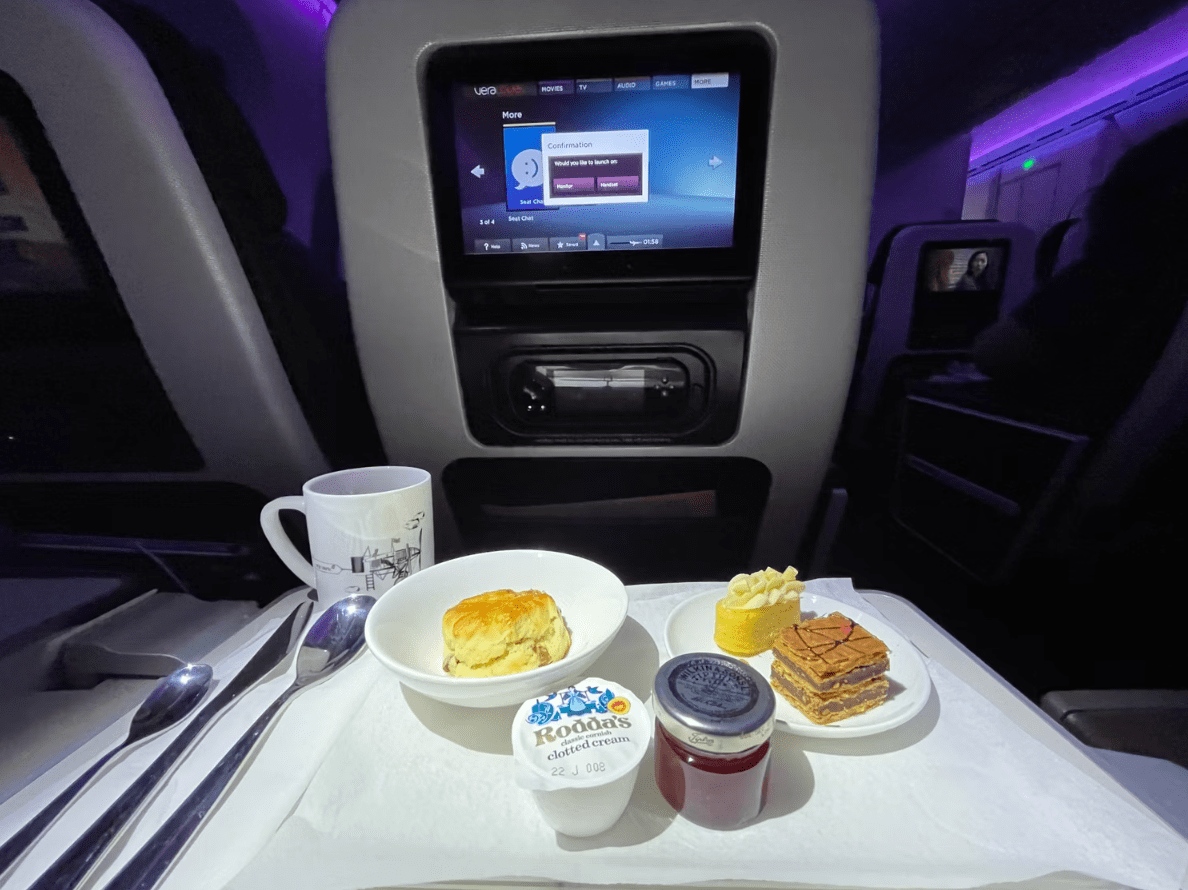
Inflight Entertainment
As with inflight catering, the passenger’s onboard experience extends to the level of entertainment on offer. This primarily applies to longer flights, although some short-haul airlines also consider this.
Unlike inflight catering, however, modern technology means that the provision of inflight entertainment has lost some traction in terms of importance in recent years. With the ever-increasing use of personal electronic devices, passengers are becoming savvier in bringing their own personalized choice of entertainment with them.
To accompany this shift in behavior, in-seat power charging has also become far more common, offering passengers the capability of having their devices topped up throughout the flight.
Nonetheless, being aware of what provision your competitors offer will serve you well when deciding what inflight entertainment level to offer.

Once the inflight entertainment experience involved the inflight movie experience as described at the top of this article and a few crackly audio channels alongside, yet the offering these days in the digital age is staggering.
Onboard Emirates’ services at the time of writing, every passenger is almost overwhelmed with an unfathomable choice to pass their time onboard. The airline’s ‘ice’ passenger entertainment system currently offers the following blizzard of choice to its passengers:
- A choice of up to 5,000 channels of movies, TV shows, music, and games – all on-demand and chosen by every passenger from their seat;
- Onboard 5G wireless connectivity with data plans available to purchase once onboard;
- Inflight airshow offering a moving map throughout the flight and the opportunity to view your aircraft and the outside world as you progress along your route;
- Inflight information, including live news, weather, and sport, along with the ability to continue to listen to music or podcasts while you explore; and
- You can even design your own personalized playlist through the Emirates app in advance of your flight which will be accessible once onboard the flight.
Airlines such as Emirates, Singapore Airlines, and Qatar Airway (the top three winners in the 2021 Skytrax Inflight Entertainment awards) have set and continue to set a very high bar for others to follow, particularly in the medium and long-haul markets.
If your new airline is considering its inflight entertainment model to adapt, it could do significantly worse than looking toward the examples set by these three leading airlines. Between them, they have set a new standard for airline passenger experience that other carriers should aspire to so that they might remain competitive.

Ground product
In the modern airline industry, no longer is it true that the passenger’s experience onboard the aircraft itself amounts to the total experience they receive. In recent years, the passenger is now with you longer than ever, through one means or another, and the experience stretches beyond that passenger sitting in your aircraft seat.
Airport lounges are now a big deal, with airlines spending millions of dollars to offer their passengers something different from the competitor. Indeed, with free limousine transfers, drive-through check-in services, exclusive lounges, and valet airport services, the passenger experience on the day of travel can start when they leave their front door at home.
Even if your airline decides against the heavy investment in lounges of its own for premium passengers, you might consider using third-party lounges or even paying other airlines for your passengers to use their lounges. This is standard practice amongst the major alliance groups (Star Alliance, oneworld), although it is not limited to them.
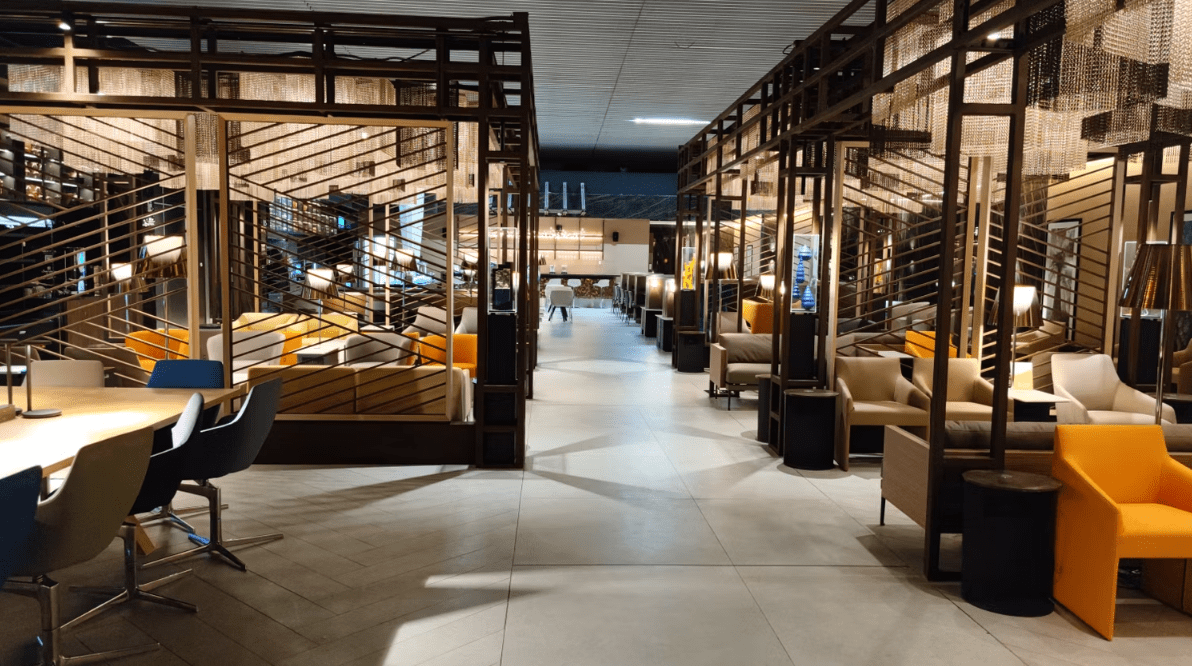
If you find your airline flying into a part of the world where the justification for building your lounge can simply not be found, this might offer you a workaround so that your most valuable passengers feel as though you are still looking after them.
Similarly, arrivals lounges have become popular, too, offering your passenger a wash and brush-up before heading away from the airport to start their day. Again, the time you have to impress your passenger has increased, although so has the time to potentially disappoint them.
If your airline chooses to offer additional services such as these (which are often reserved for your premium and hence, most valuable customers), then the experience they receive is all part of the service brought to them by your airline.
Like a complicated jigsaw puzzle, every part of this service needs to be seamless, fit nicely to the next part of the journey, and create an overall picture of your airline to that passenger that will impress them but also entice them back.

The ‘softer’ side of passenger experience
A passenger’s opinion of your airline is formed with every contact they have with it. Should you elect to offer additional services on the ground and in the air, consistency in the quality of product at each point where that contact occurs is paramount.
But it needs to be restated that the passenger experience begins way before that person comes anywhere near your aircraft or even the airport. Having a user-friendly website and online booking facility to faultless customer services facilities, and the ability to deal with another human should problems arise will enhance the soft side of the passenger experience.
Similarly, offering a customer loyalty program that offers attractive rewards for passengers remaining loyal and giving you repeat business will further enhance the overall passenger experience. Passengers who travel regularly will be more likely to give your airline their loyalty if they feel it is well-rewarded, whether through upgrades, frequent flyer mileage points, or other benefits.
Although seemingly a nice-to-have bonus, frequent flyer programs are a multi-billion dollar business. To compete effectively with others, your airline needs to be in the game with its own loyalty program for it to have the chance to enjoy its share of the spoils.

Lastly, e-marketing and social media are fast becoming one of the most efficient and effective ways to attract potential customers to your airlines. Although perhaps not immediately a prominent part of the passenger experience, they can certainly be manipulated. Such access can even allow you to ask your audience to contribute and influence aspects of the passenger experience.
In the recent e-marketing campaign for the upcoming new Australian airline Bonza, the airline asked via its social media pages for the public to suggest what food and drink they would like to see onboard the flights when the airline launches in September 2022.
Such a publicity campaign gets ‘passers-by’ interested in Bonza as an airline, allows them to be involved, and brings it a ready-made email marketing list. The airline can now better target its potential future passenger base as it gets closer to launching services as a result. A clever ploy, if ever there was one!

Managing expectations
Passenger experience and maximizing customer satisfaction are paramount for your airline. These two aspects of your airline must never be neglected and there is no room for complacency.
Your aim as a service provider is to manage what is known as the expectation gap. Your airline should be providing everything that your passenger expects as a minimum, and ideally going beyond that level each and every time someone chooses to fly your airline.
After all, falling into the expectation gap, where your passenger comes to you expecting one thing and you provide an experience that falls short of that is a risky place to be for any airline. Indeed, should you fall into that gap regularly, then lost passengers will be the result and every passenger that chooses to fly on another airline is less ticket revenue for yours, pure and simple.

From the first visit to your website to a posterior sitting in one of your aircraft seats, these are your airline’s opportunities to excel and to win over that passenger, while ensuring that they never consider flying on your competitors again.
After all, there’s much more business thinking behind the standard after-landing cabin crew announcement which states “we realize you had a choice of airlines to fly with today and we thank you for choosing us” than you may first think.
Of course, if you are aiming at the budget market, you position your airline and its product to appeal to that particular type of traveler. Managing expectations is also vital, as narrowing the expectation gap means that you can still achieve high levels of customer satisfaction without having to provide expensive frills to your service.
Through intuitive marketing and promotion of your offering, passengers will know what to expect and be grateful when they receive just that. If they experience more than they expected to, you have done your job and your airline’s long-term survival prospects improve with every satisfied customer disembarking one of your flights.

Customer satisfaction is everything
When planning your airline, persuading people to use your airline and to spend their travel dollars flying on your flights is everything. The quality (and value for money) of the passenger experience that you offer will be vital to achieving these objectives.
From the first inquiry into which airline flies the route they are interested in, arguably right to the moment that they step out the door of the arrivals concourse at their destination, every point of contact between them and your airline must be done right.
Satisfying your passenger the first time and meeting, if not exceeding their expectations, will influence whether they leave that airport positively, sign up for your frequent flyer program, recommend your airline to others, and ultimately, and most importantly, whether they will use your airline again.
If things go wrong along the way, admitting and owning those errors, and doing what you can to put them right will help to smooth over any issues. and can even turn a negative passenger experience into a positive one, depending entirely on how it is handled.

But offering your passengers an experience that sets it out from the crowd, and does it in a positive way will ultimately determine whether your airline thrives, just survives, or disappears – joining so many others that have failed to ignite that spark in their passengers that has led the airline to eventual failure.
Next time, we will be examining the other critical services that are required to support a fully functioning airline business. From fuel to food, and from handling to baggage services, all of these (and more) will be examined in further detail in ‘How To Start An Airline: Part 8 – Procurement of Essential Support Services’.
We’d be delighted to welcome you onboard with us again in the near future!
Source: Simple Flying
Warning: Illegal string offset 'cookies' in /home/u623323914/domains/eng.bayviet.com.vn/public_html/wp-includes/comment-template.php on line 2564